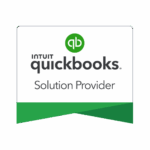Trump’s tax reform plan, which has immense tax breaks for business and the wealthy, is meant to emphasize growth. It would infuse $4-6 trillion into the economy over a 10 year period, for the most part by method of business tax reductions. This could be referred to as supply-side economics, which you can do with your own money and a certified bookkeeper.
Two issues with this:
- To start with, tax reductions would need to be gigantic to have any macroeconomic impact on a $16-18 trillion economy.
- Regardless of the possibility that upgraded development were accomplished, it would not be uniformly dispersed. US income taxes are progressive. Spending is not, so the framework all in all is not re-distributive.
Organizations
There is some unique thinking in the Trump business tax reform plan, however its income cost diverts from the thoughts being advocated. Trump is wanting to cut the corporate tax rate by more than half, to 15%, and make that accessible to the half of all US organizations that are not in corporate form.
It is not clear, but rather he may likewise be proposing an elective expense assurance for organizations to empower their proprietors to exploit the 15% rate for undistributed pay.
Although a lower rate for these for the most part private organizations raises concerns of fairness, information created by the US Treasury demonstrate that the proprietors of associations pay low viable rates under the present framework.
The House Republicans have proposed the goal based income expense would work like a subtraction strategy VAT. It would be an income charge since capital hardware consumption’s could be instantly deducted in full. Protected innovation, research and wages expenses would likewise be completely deductible. This arrangement, which would be a sea change in corporate policy when it comes to tax, and is probably going to be the beginning stage for Trump business tax breaks.
Individual Tax Reform
There is very little squeeze in Trump’s tax reform plan for middle-income families with small businesses. That is because there’s not much more cutting that’s possible, a certified bookkeeper is good to have when it comes to year end closing of your books to get the best tax cuts available. White collar class individuals don’t pay a considerable measure of taxes separately. They pay a great deal of taxes on the whole including payroll tax which wouldn’t seem to change with Trump’s plan.
As per the Urban-Brookings Tax Policy Center, a glance at a family of married parents and two children with $82,000 in income demonstrates that they are currently paying $6300 in payroll taxes (not including the business’ equivalent share) and $4000 in taxes. Trump’s would decrease the last number to $3500. So, we’re talking an extra $40 every week in their paycheck…not much help there when it comes to individual tax reform.
Trump wants individual rate sections of 12, 25 and 33%–the last being a tax reduction at the top, however it would kick in at a generally low level. He would repeal the AMT and a few people would be in higher sections, balanced by a larger standard deduction ($15,000), under which 60% less of individuals would itemize (few do currently), with a cap on itemized deductions.
Trump wants to cancel estate tax. Rather his reform plan would tax capital gains at death—a very unusual suggestion that has not been considered as a serious proposal in the past. As a certified bookkeeper looking at Trumps exemption, it would be enormous, around $10 million in this case.
Trump will tax investment fund managers under his new plan on profit interests as regular earnings and wants to repeal the 4% add-on tax substitute for Medicare tax. These fund managers would profit by his lower business rates for partnerships under Trumps plan.
Trump stated he would repeal all tax connected with Obamacare, which probably would incorporate the punishment for not purchasing medical insurance.
Subsidies for Children
Our child credit is exceptionally complex. The filer must be the guardian of a qualifying dependent (youngster under 13). There is a reduced rate of credit—beginning at 35%–for each $2000 increment of income over $15,000. Child care costs must be employment related. There is a $3000 per head restrict on the qualifying costs, capped at the lower worker’s pay.
Around 20% of all kids live in poor family units that don’t owe income tax. At the point when the tax credit was made, the Republicans needed to constrain it to individuals who owe income tax. It is still nonrefundable and inaccessible to these much lower income families.
Trump would offer a contrasting option to the credit in the shape of a nonrefundable over the-line conclusion for up to $5000 of child care costs, and a capped rebate for EITC family households that don’t owe any taxes. The derivation would be capped by state for the normal cost of care. There would be generally high income limits of confinement and stage outs for the deduction as well. Trump’s proposed end of head-of-household filing status and individual exceptions could disintegrate the benefit of the child care credit.
Trumps tax reform plan has many people asking questions on how this will affect each household and business, and these are just scratching the surface of the changes Trump wants to implement. So, making sure your books are in order will be essential in the upcoming tax seasons.
Certified Bookkeeper to Align Business
If your not sure where to start, contact BooXkeeping for a free consultation on how we can take the headache out of all your bookkeeping needs making your year end closing a bit less stressful. Partnering with a certified bookkeeper will keep you and your accountant very happy this upcoming tax season.







